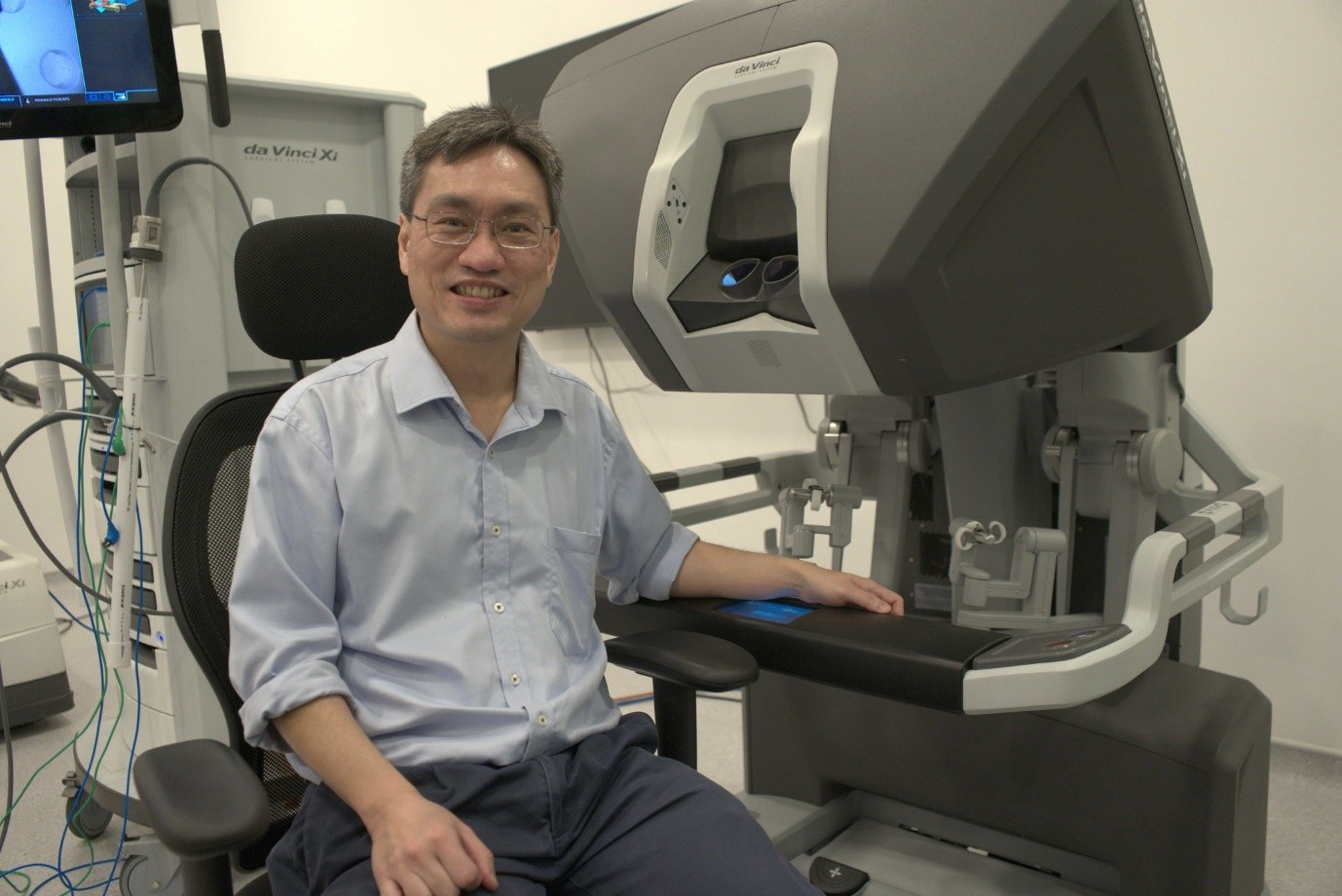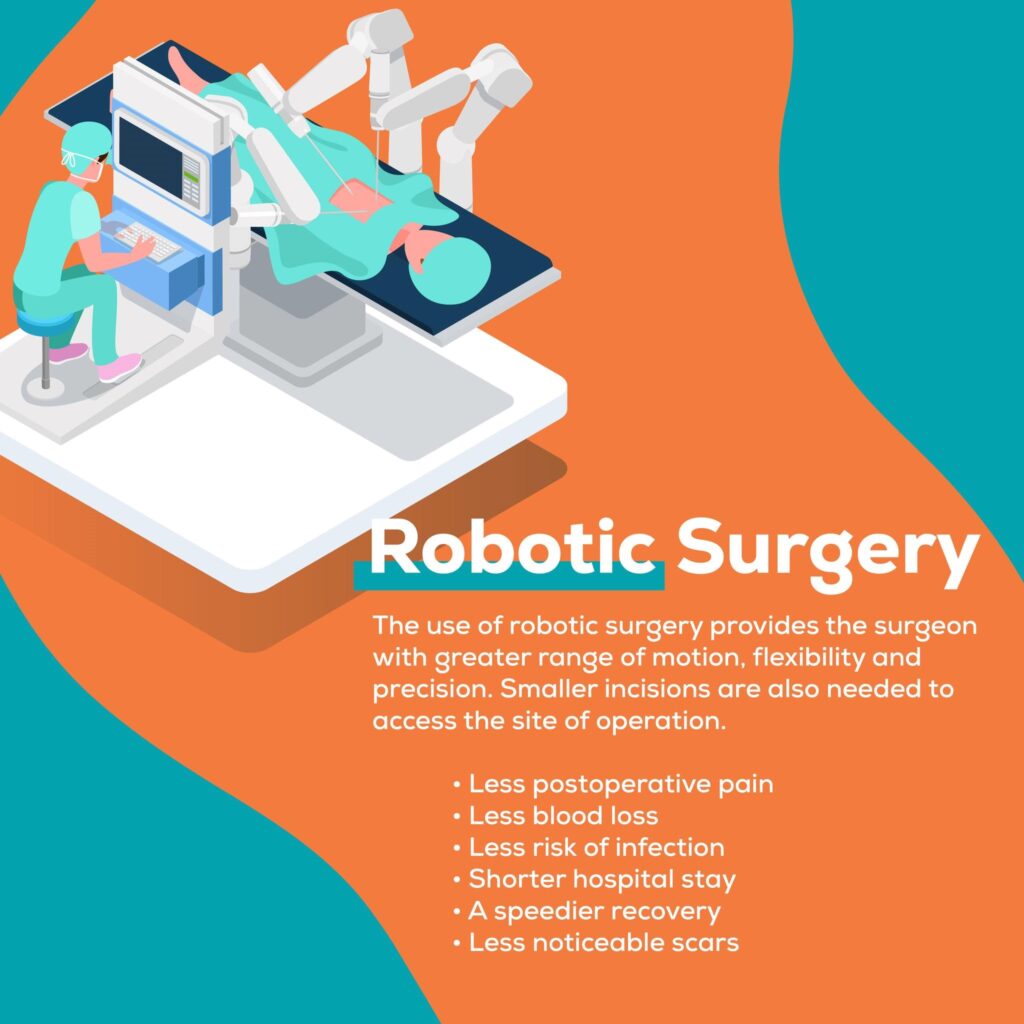Robotic Surgery – What is it?

The origins of robotic surgery date back to over 50 years ago, and today these surgeries play a significant role in a number of disciplines, including urology. However, some people are still unaware of what this procedure is all about and find it to be quite intimidating. If this is something you can relate to, we at Assure Urology & Robotic Centre have got you covered. In this article, we will debunk some common myths and misconceptions so that you will have a good insight into robotic surgery in Singapore.
Robotic surgery: what is it?
Before we dive into dispelling the myths about robotic surgery, let’s take a look at what robotic surgery actually is. It is a minimally invasive procedure that involves the use of advanced and specialised technology. The robotic surgical system has mechanical arms with surgical instruments connected to them as well as a video camera.This technique typically requires only a few keyhole incisions to access the required location that needs to be operated upon. Once the instruments are placed in the incisions, the surgeon will perform the surgery, controlling the robot through a robotic console. The enhanced visualisation offered by the three-dimensional camera will help the surgeon to have a clearer and highly magnified view (10X) of the area.
The myths of robotic surgery
Myth 1: The procedure is performed by an automated robot
Fact: While it is understandable for this misconception to float around largely due to the term “Robotic surgery”, it is completely untrue. These are usually complex surgeries that cannot be performed independently without an experienced surgeon. The robotic arms move in response to the surgeon’s finger movements on the console and can filter a surgeon’s hand tremors during the operation. This is beneficial as it allows for enhanced accuracy and safety. But this does not mean that it can replace the integral role played by a surgeon.
Myth 2: It is a simple procedure, and any surgeon can perform it
Fact: No, this is not true. Only surgeons who have been trained to use this system can perform the procedure successfully. The doctors need to undergo extensive training so that they are capable of handling and operating the robotic system well. This training programme typically involves integral aspects such as simulation training, acquisition of the required technical skills and knowledge, as well as modular training.
Myth 3: Robotic surgery holds no advantage over traditional surgeries
Fact: Many are under the misconception that robotic surgery shows no significant advantages and is incredibly expensive and ineffective. While it may seem like a costly procedure, it must be noted that the drawbacks associated with conventional surgeries, such as longer hospital stays, higher medication costs, slower recovery and return to work and so forth, can add to your expenses. With robotic surgery being minimally invasive, you might be able to compensate for such expenses as you would not need a long period for recuperation. Moreover, the instruments provide a wide range of movements and offer the surgeon enhanced control and flexibility.
Myth 4: Robotic surgery is not safe
Fact: Any procedure can come with certain risks. For instance, open surgeries may come with a number of risks and complications, including infection, haemorrhage, and shock. However, the robotic system has been constructed and designed with in-built safety features to ensure that the patient is well protected. Many individuals who undergo this procedure experience positive outcomes with a faster recovery period. Therefore, they are generally considered to be quite safe and reliable and usually do not pose additional risks of adverse outcomes as compared to traditional surgical approaches.
Myth 5: Robotic surgery has a 100% success rate
Fact: While robotic surgeries are generally safe and effective for the correct clinical indications and have a high success rate, one must not expect a 100% success rate with robotic surgery. However, there are many benefits of robotic surgery, such as lower infection risk, less pain (post-operatively) and, as mentioned earlier, shorter hospital stays with a quick recovery period.
Myth 6: Robotic surgery can be used for cosmesis
Fact: While robotic surgery is currently not indicated for cosmetic purposes, it is used to treat many diseases. For example, robotic urologic surgery is frequently used for the treatment of several urological cancers and many other benign conditions as well. Furthermore, it is widely used for other branches of medicine, including gynaecology, cardiothoracic surgery, ENT and general surgery.
Robotic urologic surgery in Singapore
If you are suffering from a urological condition such as prostate cancer or need bladder cancer treatment, or would like some information on how robotic urologic surgery can help you – you are in the right place. Get in touch with Assure Urology & Robotic Centre today and schedule a consultation to meet with our experienced and dedicated Senior Urologist in Singapore – Dr Terence Lim. He has over 20 years of experience in public healthcare and has won a number of prestigious awards, such as the Rising Star (Urology) of the Year in Asia Pacific 2023, as well as the Best Urologist Bronze Winner 2023. You will be in good hands at Assure Urology & Robotic Centre



